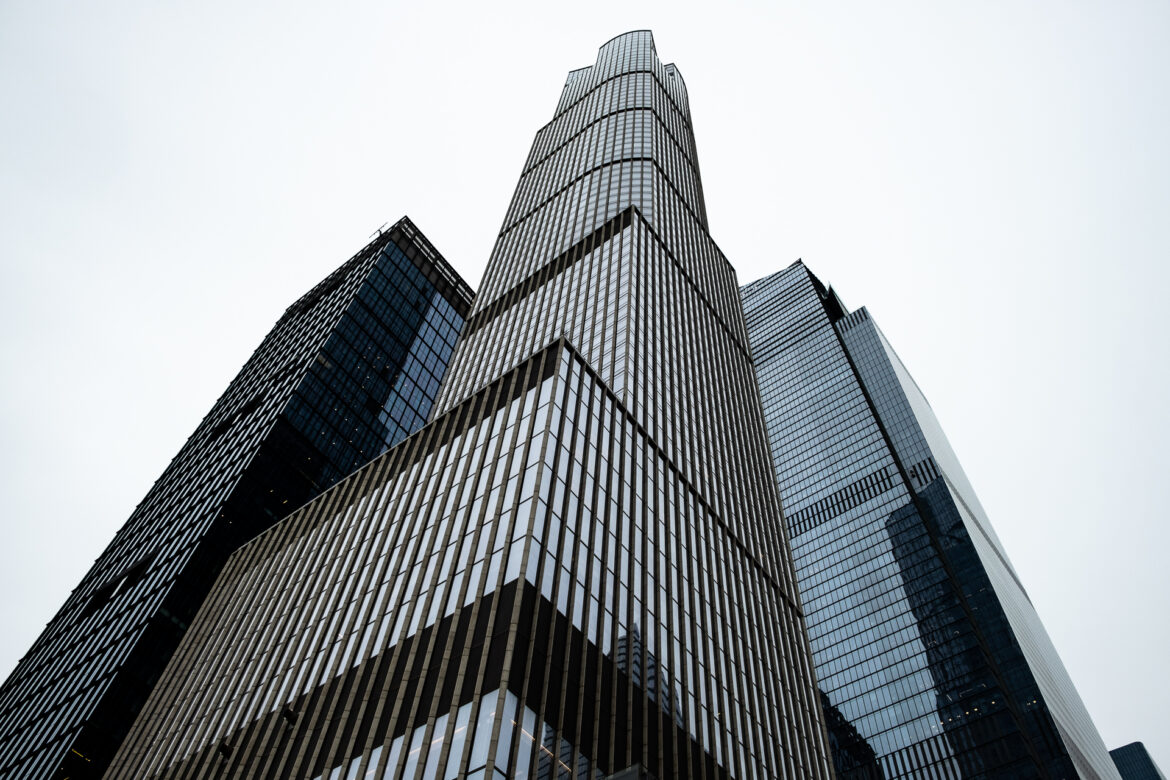“If New York is serious about meeting its climate goals, the city must then live up to its stated priorities and give programs the resources to meaningfully follow through on their legislative mandates.”

Adi Talwar
A skyscraper on 11th Avenue in Hudson YardsAccording to the U.S. government’s latest National Climate Assessment, extreme climate events cost our nation $150 billion per year. And that estimate does not factor in the loss of life or related healthcare costs associated with these impacts.
By comparison, the U.S. Department of Agriculture estimates that foodborne illnesses cost our nation $17.6 billion per year. Both issues are critical, and deserve attention. But it does make you wonder how New York City can justify hiring only 11 inspectors to review and monitor the compliance of 50,000 of the city’s largest buildings with Local Law 97 of 2019, which is designed to reduce greenhouse gas emissions—70 percent of which are produced by these buildings.
Again, by comparison, the New York City Department of Health & Mental Hygiene employs more than 100 inspectors for its approximately 27,000 restaurants, each of which receive at least one inspection per year. If the city is serious about tackling the climate crisis, the numbers don’t add up.
In 2019, in response to the worsening climate crisis, New York City officials passed Local Law 97 —a historic piece of legislation aimed at reducing greenhouse gas emissions in buildings.
Reducing emissions from buildings is crucial to accomplishing New York’s clean energy transition overall. Local Law 97 has been heralded as both a courageous and necessary policy that seeks to meet the scale of the climate crisis with sweeping action. More specifically, it requires landlords to reduce carbon emissions in their buildings by 40 percent by 2030 and ensure they are emissions-free by 2050. These are ambitious goals, but their urgency cannot be overstated.
This is the first year that Local Law 97 implementation goes into effect. But a Gothamist article revealed that only 11 New York City Department of Buildings (DOB) staffers are responsible for conducting compliance reviews in the over 50,000 buildings covered by the law, underscoring Mayor Eric Adams’ severe and troubling lack of commitment toward its implementation.
A single inspector cannot review and enforce the compliance plans of more than 4,500 large buildings in a year. Based on the traditional model of 260 working days per year, that would require them to read, analyze, and verify more than 17 plans per day.
Our decision-makers know that tackling building emissions in New York City is an essential and pressing step in fighting the climate crisis, but the city needs to actually allocate enough resources—in staffing capacity, funding, technical assistance, and more—to make Local Law 97’s implementation a success. Instead, the mayor has committed funding and staffing at levels that are woefully insufficient and guarantee that the program’s rollout will be hamstrung and inefficient.
We do not have time for the delays that are certain to stem from this kind of underfunding and de-prioritization. If New York is serious about meeting its climate goals, the city must then live up to its stated priorities and give programs the resources to meaningfully follow through on their legislative mandates.
Actually achieving the target building emissions reductions will have far-reaching benefit, even beyond mitigating the worst impacts of climate change. Building emissions are one of the largest contributors to air pollution in New York City, worsening respiratory illnesses like asthma and other health problems for vulnerable New Yorkers.
Lowering building emissions through policies like Local Law 97 will result in improved air quality and promote public health for New Yorkers on the frontlines of both the climate and public health crises, including low-income people, people of color, elders, and children.
New York City has a choice right now. Will it live up to its stated commitment to being a global climate leader by ensuring the successful implementation of Local Law 97? Or will it continue to disinvest in Local Law 97’s success through underfunding and understaffing?
With budget season upon us, it’s time for the mayor to put his money where his mouth is if he really cares for our communities. In order to make the implementation of Local Law 97 successful in practice, the city must provide resources and staff capacity—and create jobs—to make it work.
Eliza Klein is the Clean Energy Program Manager at WE ACT for Environmental Justice, a community-based organization that has been working to advance environmental justice at the city, state, and federal levels for more than 35 years.








